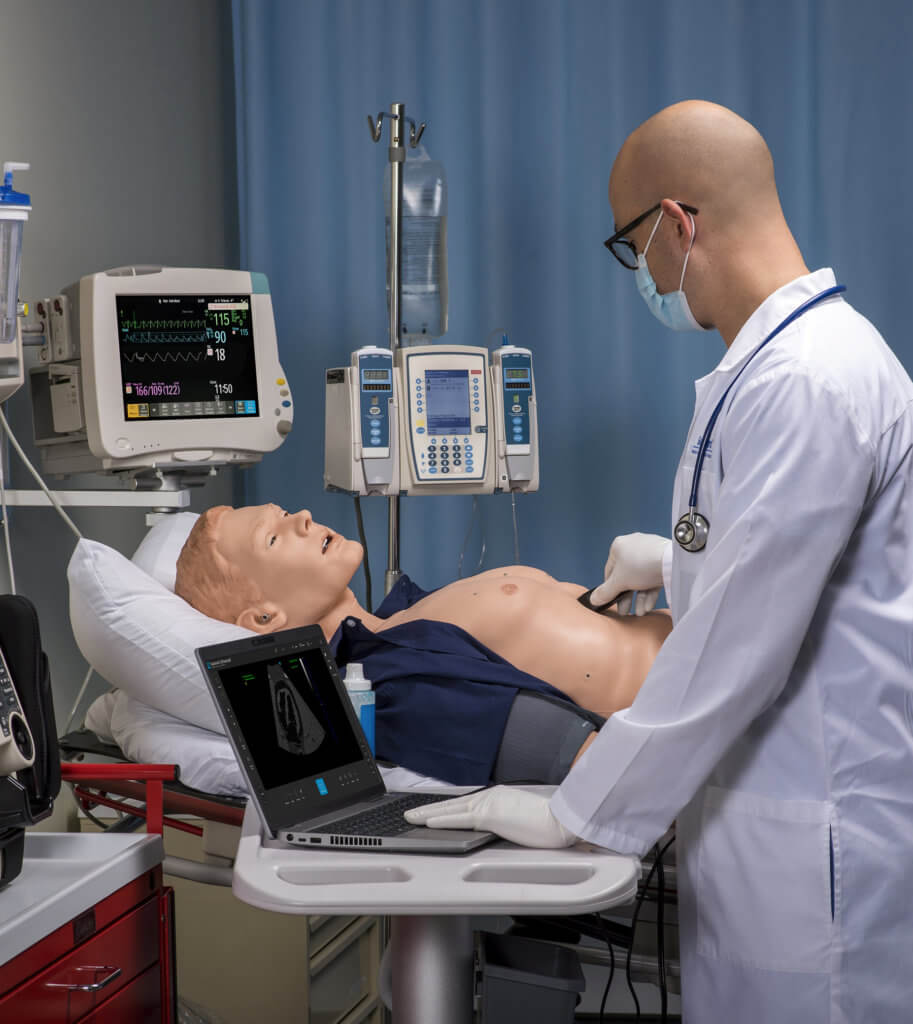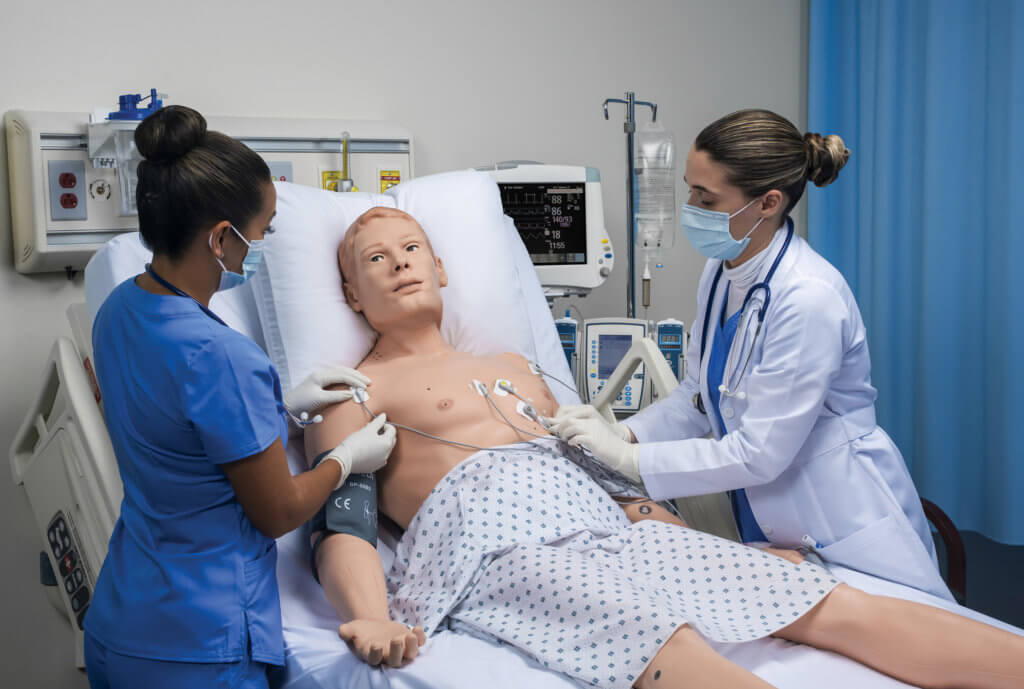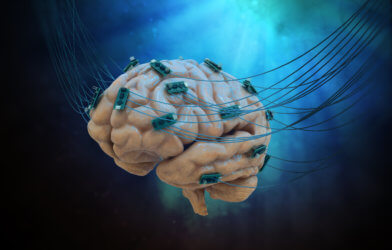An ultra-lifelike robot that replicates a person with a brain injury is described as the most advanced multidisciplinary patient simulator in the world. Gaumard Scientific Co. says the humanoid form features lifelike movement to simulate symptoms of stroke and traumatic brain injury (TBI).
The robot, dubbed HAL S5301, simulates realistic stroke and TBI scenarios with lifelike motor reflexes. Such characteristics include facial drooping and related head, arm, and hand movement seen in patients. The company aims to help train medical staff and first responders by blurring the lines between simulation and real life.
“HAL S5301’s technology including conversational speech, lifelike movement, and next-generation simulated physiology has never been seen before. These industry-first capabilities are here to usher in Gaumard’s next revolutionary leap in simulation,” the Miami-based company explains.
The Gaumard Neural Speech model enables HAL to converse naturally with providers by understanding context, responding automatically, and getting smarter over time. To support true-to-life in situ training, HAL can interact with real mechanical ventilators, patient monitors and sensors, and defibrillators.

“HAL S5301 is the first simulator to fulfill educational objectives across multiple clinical disciplines. Using the latest technology, conversational speech and AI have been incorporated to emulate real life. For the first time, we have developed a simulator for brain injury training with highly advanced motor movements,” says John Eggert, Gaumard’s Executive Vice President, in a statement. “HAL S5301 brings Gaumard’s most advanced technologies to offer the world’s most advanced simulator.”
“HAL S5301 represents Gaumard’s next generation of astonishingly realistic patient simulators with the most advanced UNI operating system which manages vital signs, assessments, and debriefing,” adds James Archetto, Gaumard’s Vice President of U.S. Direct Sales. “In addition, HAL S5301 introduces advanced anatomy and physiology in simulated cardiac, respiratory, and vascular physiology, including arterial access, lung compliance, and high fidelity auscultation.

“Real medical equipment can be used to monitor and diagnose HAL S5301’s clinical condition, just as it can be on all of our high-fidelity simulators,” Archetto continues. “It is designed to be a key component for professional-level training across clinical disciplines as well as academic-level education. An optimised simulation program using HAL S5301 enables safe and effective learning opportunities.”
Report by Dean Murray, South West News Service












